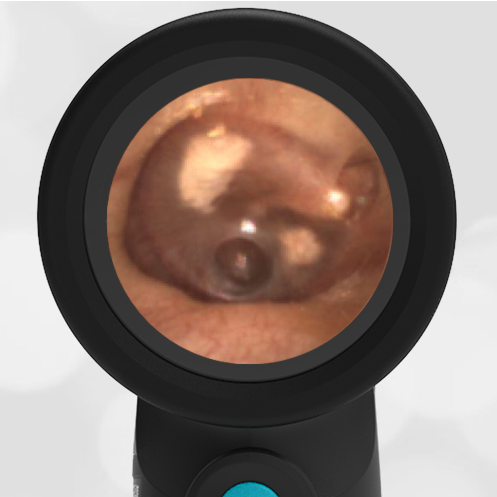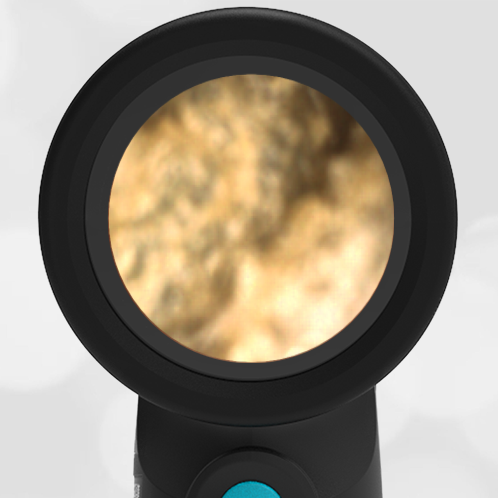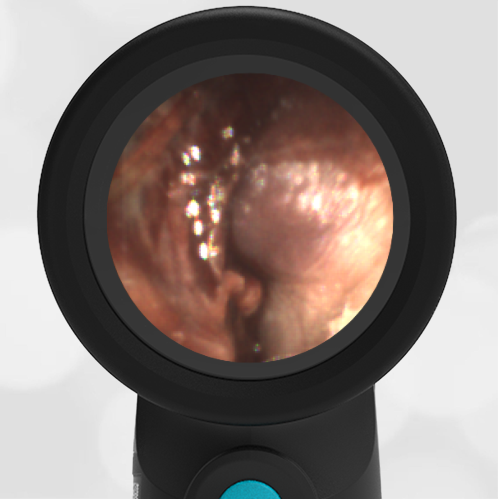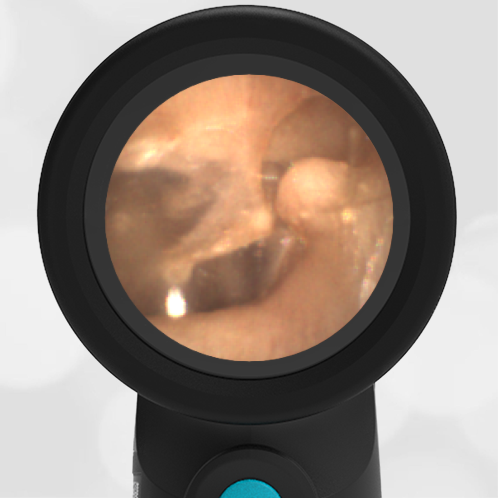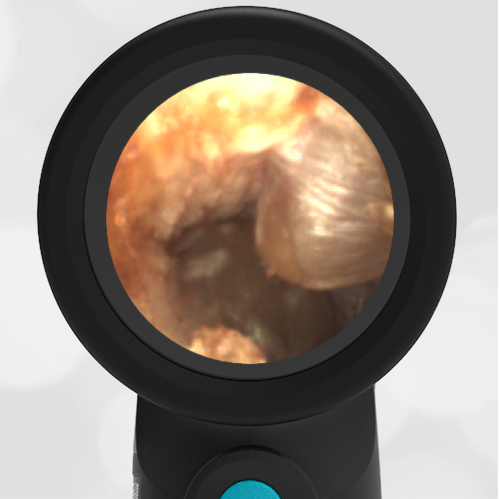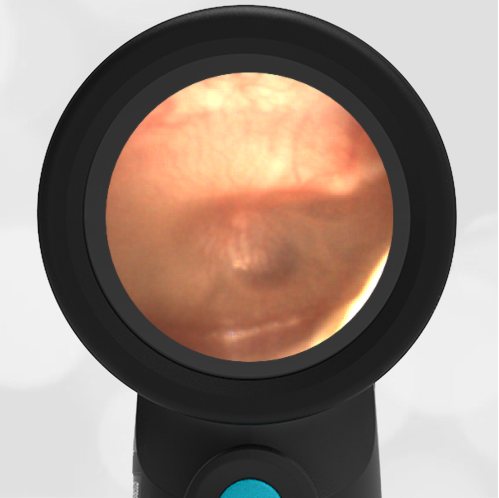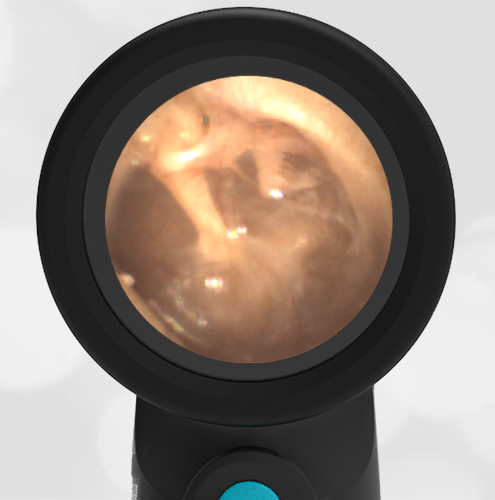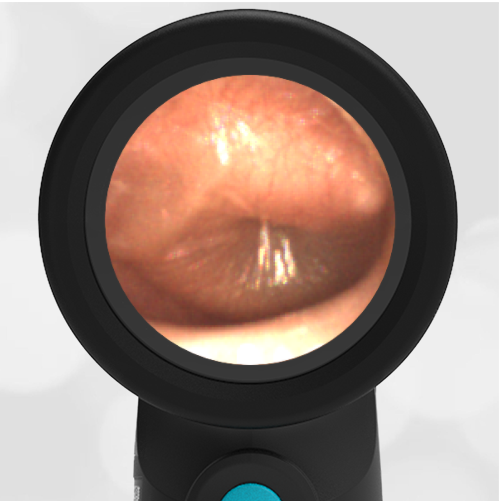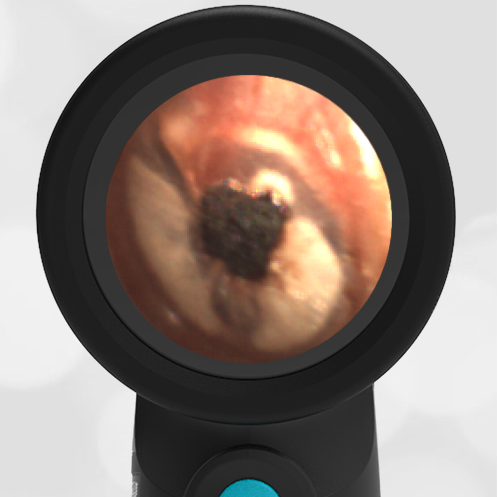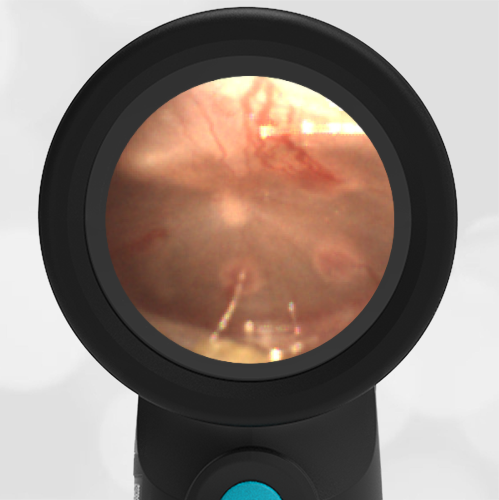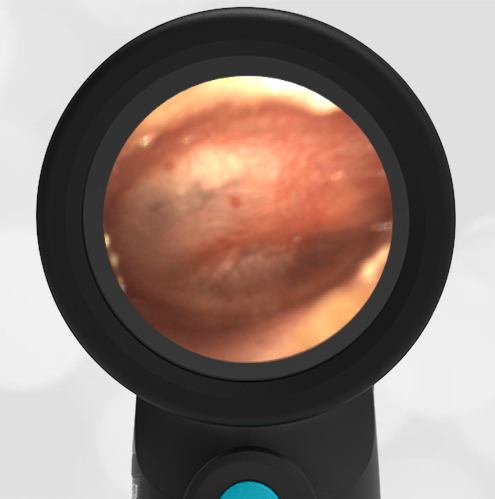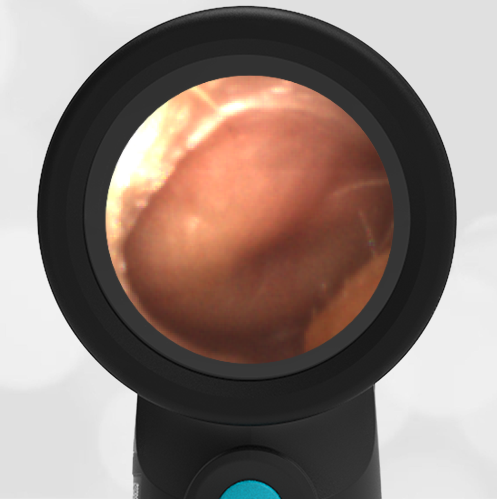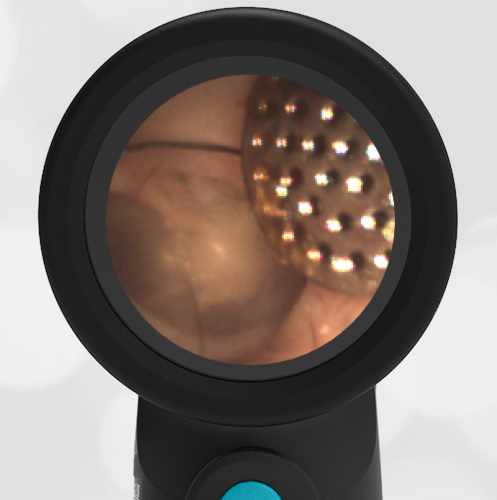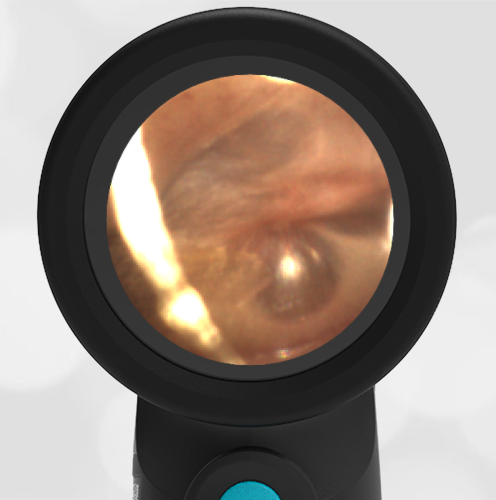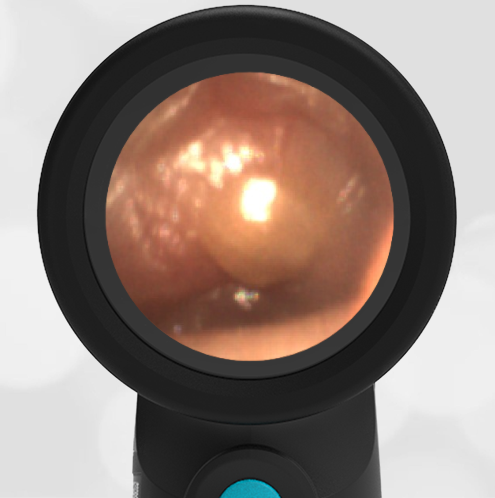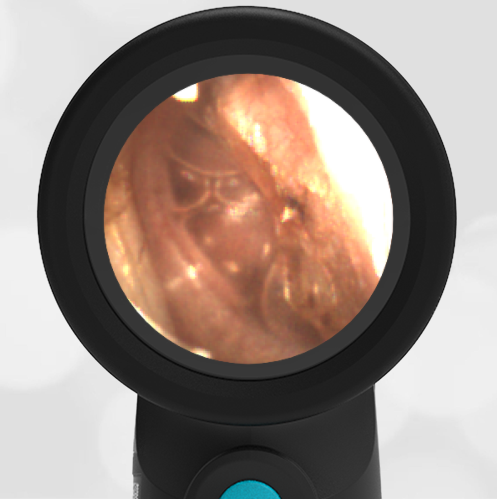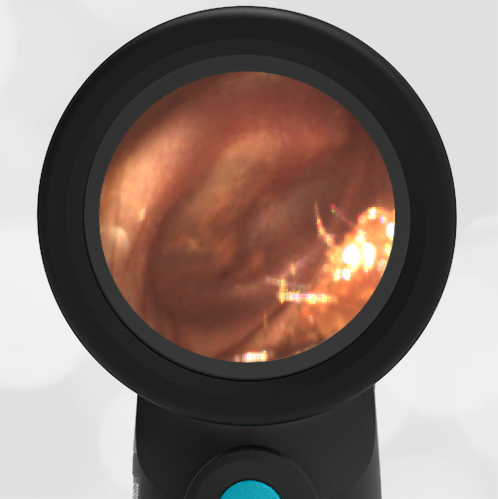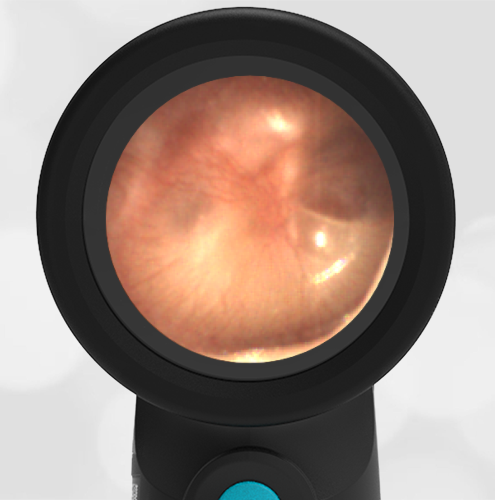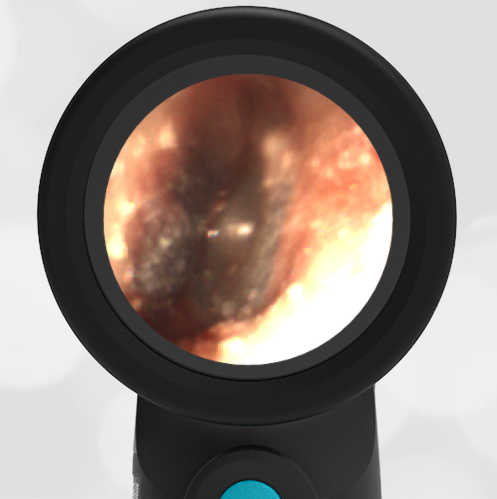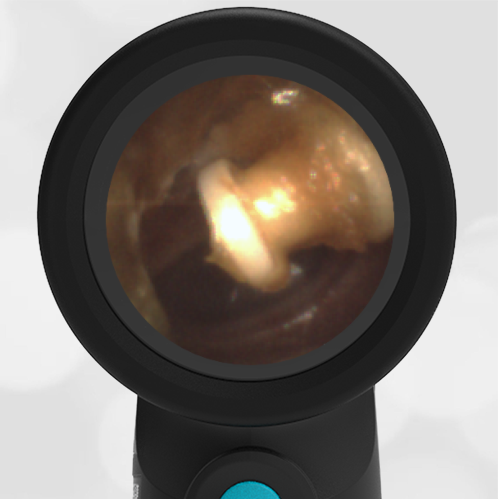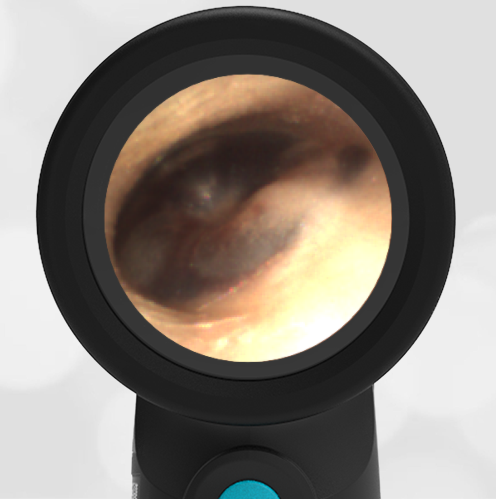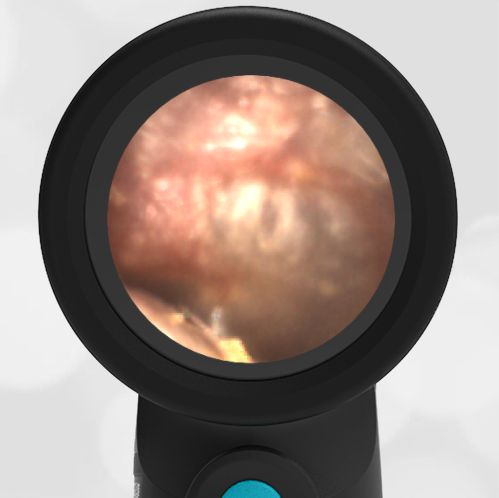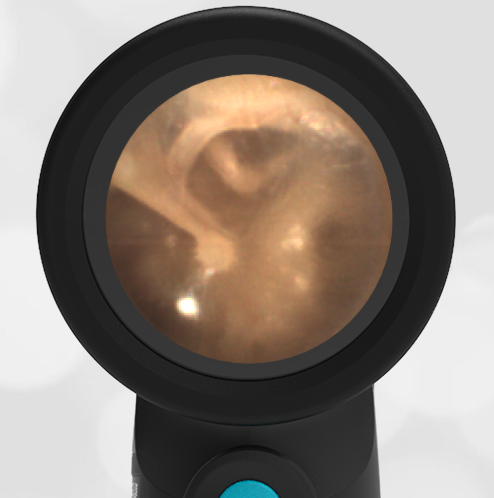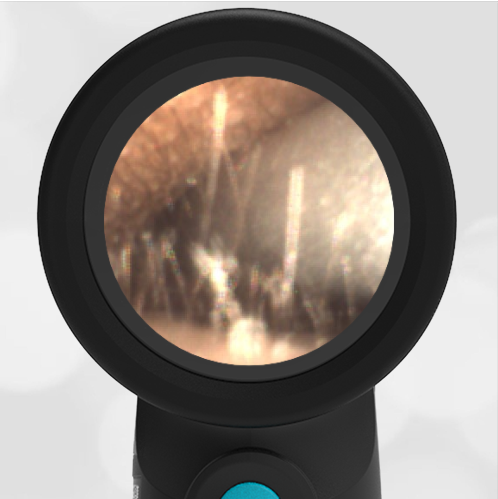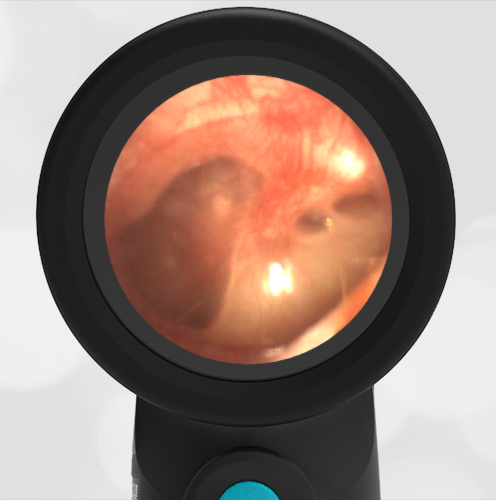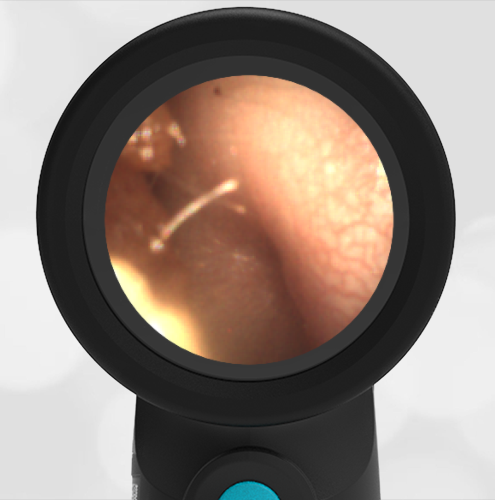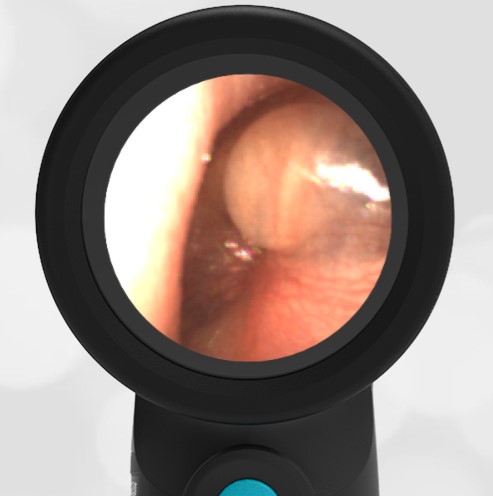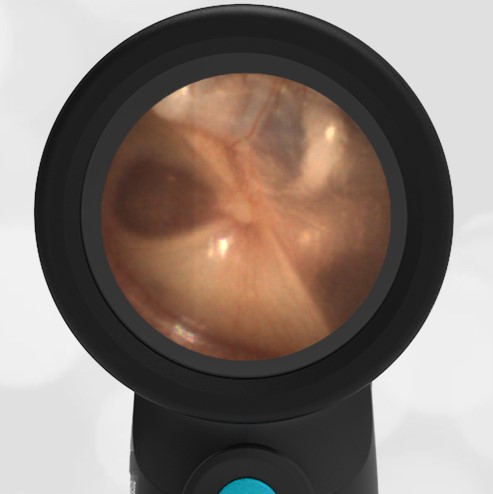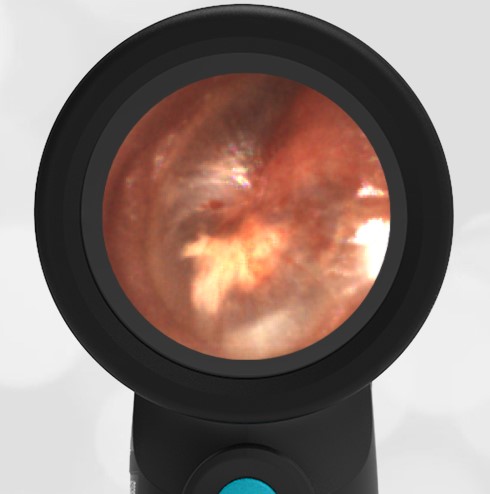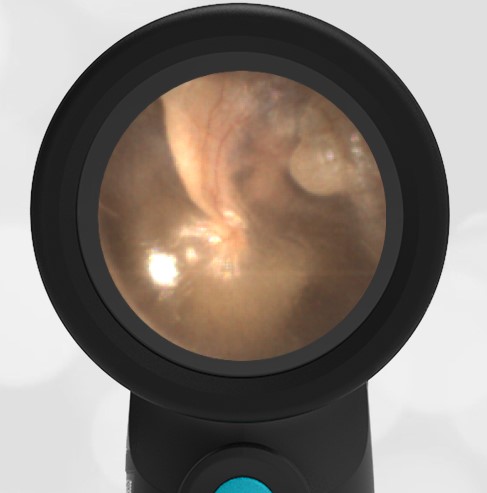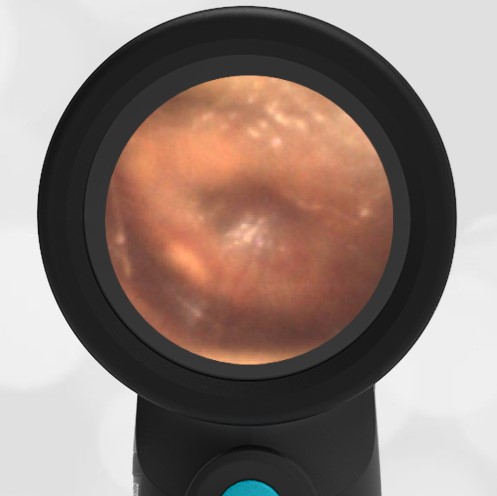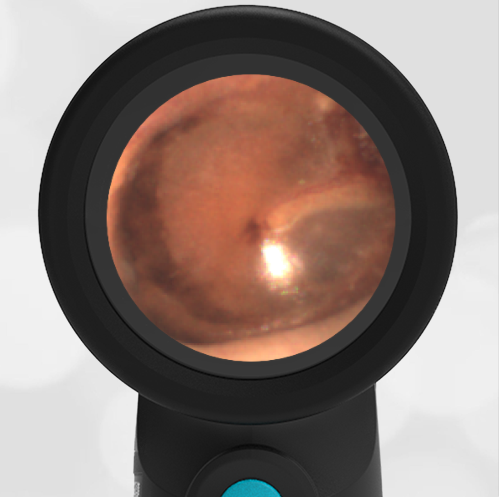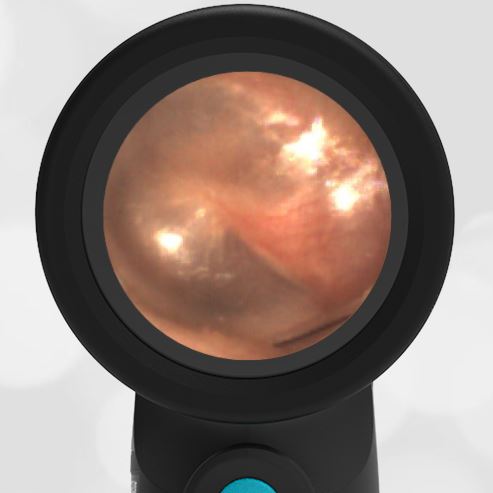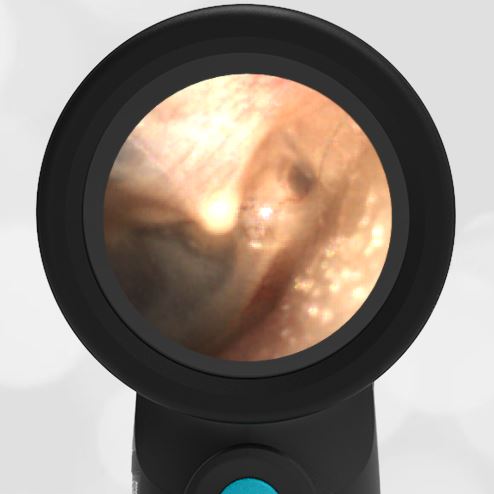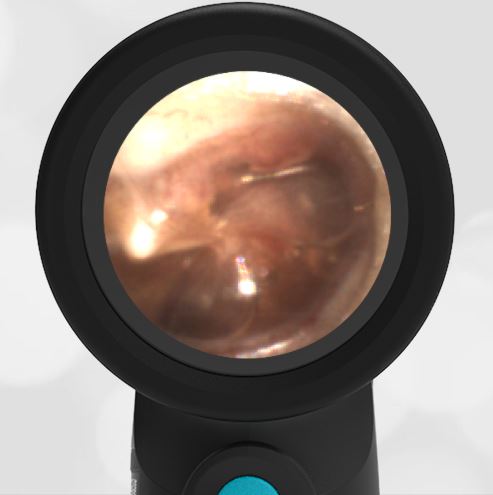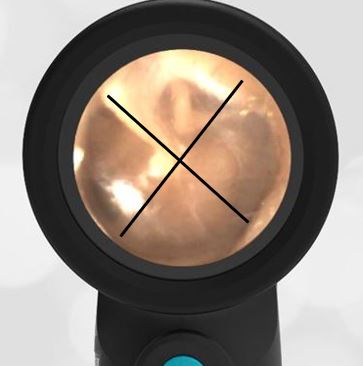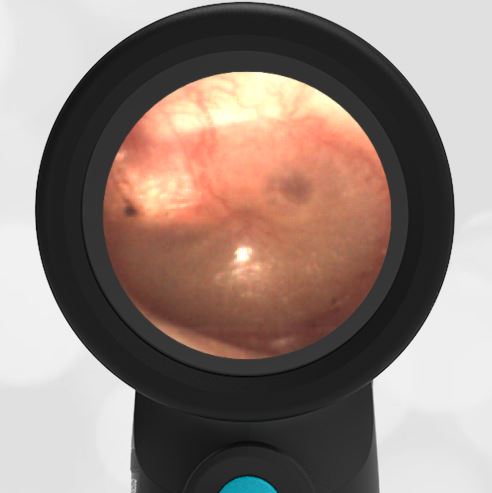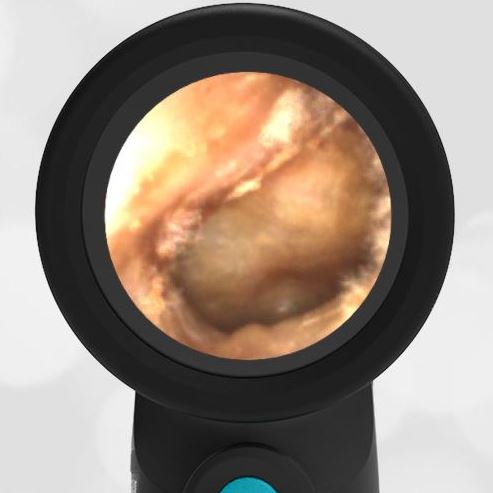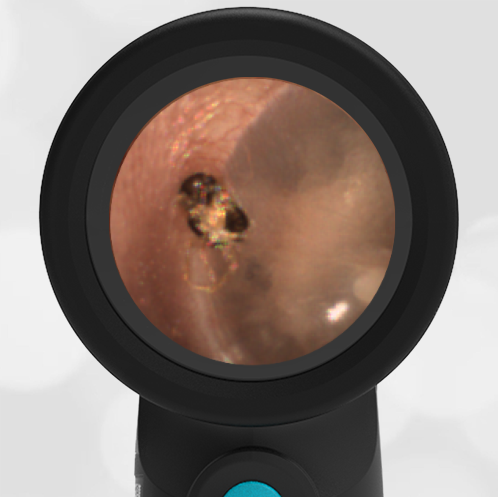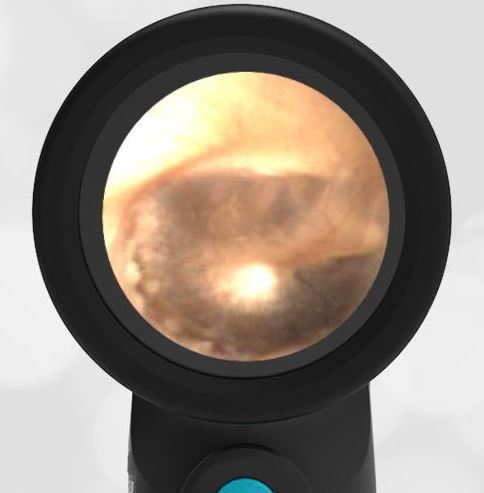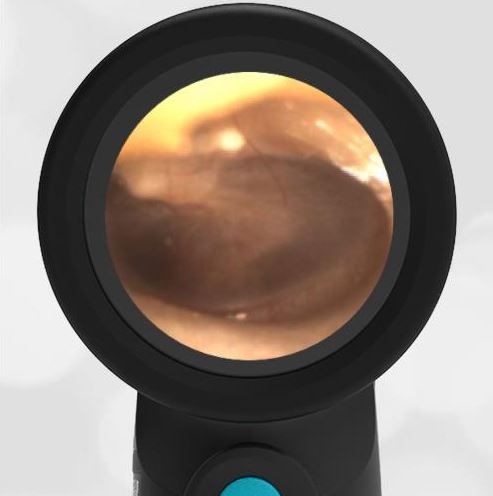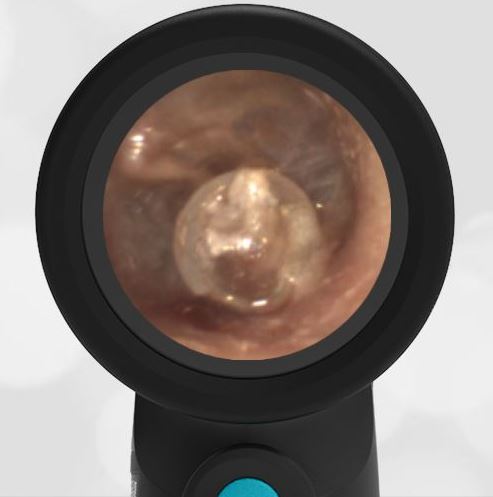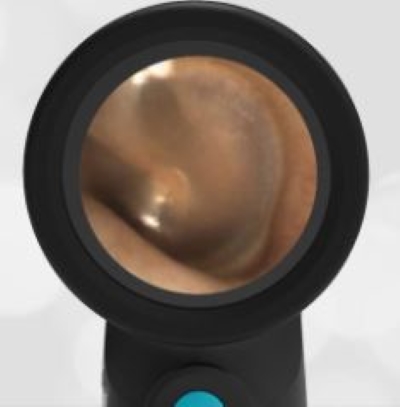
Foreign Body: (Bead) In Nose
A 6-year old female presents to the emergency department with a foreign body in her nose. Her mother reports that the child had been playing with beads and decided that it would be a good idea to put the bead in her nose. The mother attempted to remove the bead without success. This was followed by a trip to urgent care where they were able to see the bead with an analog otoscope, but were unable to remove the foreign body. The family was sent to the emergency department. Examination of the nostril with the Wispr Digital Otoscope revealed this image.
The child has a bead in her nose.
A benefit of the Wispr is the ability to easily share with the parents the location of the foreign body and to discuss removal options. A resident physician attempted to remove the bead with a Katz extractor. A Katz extractor is a small tube with a balloon at the end that can be passed beyond a foreign body, inflated, and then extracted to bring the foreign object out. Unfortunately, the first attempt was not successful and the child was no longer “cooperative.”
After sedating the child, the bead was uneventfully removed using the extractor under direct visualization from the Wispr. A key benefit of the Wispr is its anti-fog coating that allows for a clear image even in a high-humidity environment like the nose. After removal, minor irritation to the nasal mucosal was noted that was not felt to need additional treatment.
Here is the video from the Wispr of the bead in the nose.
Although the Wispr otoscope is optimized for use in the ear canal, it can be useful in examining both the nose and mouth.
WiscMed thanks Dr. Michael Kim of the University of Wisconsin BerbeeWalsh Department of Emergency Medicine for the submission of this interesting image.



